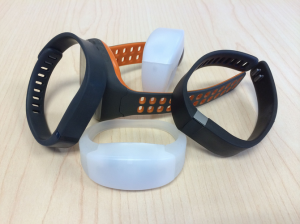 The Advances in Fitness and Wearable Technology as it Relates to Physical Therapy
The Advances in Fitness and Wearable Technology as it Relates to Physical Therapy
Innovation and progress in computer-based technologies, fitness micro-sensors, and telecommunications has resulted in numerous advances in fitness and wearable technology as it relates to the health monitoring of individuals actively involved in physical therapy. Large assortments of small wearable technology sensors are currently in existence and available for use; physical therapists expect the number and types of these products to expand immensely over the course of the next few years. Wearable technology does more than provide a patient with input about their fitness-related progress; it provides clinicians and therapists to monitor patients in their homes, as well as their communities.
The Wearable Motherboard
One of the first advancements of fitness and wearable technology as it relates to physical therapy is the concept of the wearable motherboard as originally pursued by a team led by Dr. Jayaraman of the Georgia Institute of Technology. The wearable motherboard was placed into a product that is now known as the “Smart Shirt”, which is currently available through Sensatex, Inc., USA. This form of technology allows physical therapists and other types of medical professionals to monitor their patient’s temperature, the movements performed by the trunk of the body, and the heart rate. The wearable motherboard includes many components to optimize its overall level of effectiveness. Examples of these components include a data bus, sensors, optical fiber technology, a microphone, and a high functioning processor that is placed within a textile grid that makes it possible to wash the shirt.
Biotelemetric Sensor Patches
The next advancement in fitness and wearable technology in the world of physical therapy are the introduction of the biotelemetric sensor patches created at the NASA laboratory in Pasadena, California. These non-invasive sensor patches are designed to record a large assortment of physiological data over long periods of time. These patches communicate with a hand-held readout unit. There are microelectromechanical components, electronic-based circuitry, and other technologically-advanced pieces that transmit a radio signal to the hand-held readout unit. These devices effectively measure blood pressure, heart rate, and several other physiological-based processes.
Armband Technology
When it comes to advances in fitness and wearable technology in physical therapy, the SenseWear Armband is worth mentioning. This sleek band is a body monitor that enables physical therapists to monitor a patient’s physiological data and their lifestyle data outside of the clinical setting. This unit has the unique capability of collecting information about the temperature of the skin, the overall body temperature, the heart rate, and even the galvanic-based skin response. This device may be worn for up to 72 hours before the battery must be recharged. It may store up to five days’ worth of physiological data.
Conclusion
Physical therapists and other types of clinicians are now turning to telemedicine options, such as wearable technology devices, in order to learn more about their patients and to monitor their progress outside of the medical setting. Numerous advances and breakthroughs continue to emerge when it comes to fitness and wearable technology. In this guide, you have been introduced to the latest advancements. These include the wearable motherboard, the biotelemetric sensor patches, and armband technology. At Back to Motion Physical Therapy, we offer our own forms of wearable technology to improve your health and range of motion. To learn more, you may contact us today by calling: 303-832-5577
